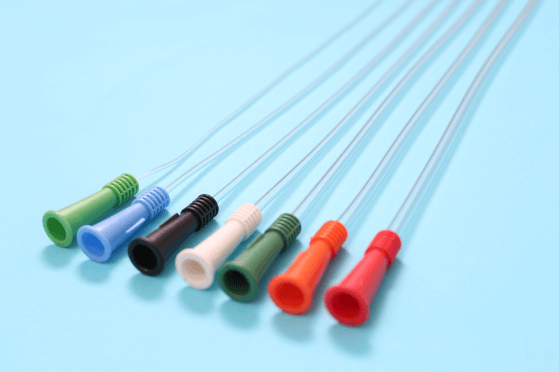TEl: +86-13148388090
Fax:+86-571-88616515
Hydrophilic vs. Lubricated Catheter – What's Best for Your Market?
Author: admin / 2025-06-09Patients with urinary incontinence can often manage their condition independently by using intermittent catheters under medical supervision—helping them regain control and improve daily life. Among the various types of catheters available, hydrophilic and lubricated catheters are both designed to reduce discomfort and irritation during insertion. But what sets them apart, and how do you choose the right one for your market?

Why Does Choosing the Right Catheter Matter?
For medical institutions, emergency responders, and military procurement teams, the type of catheter selected impacts patient safety, procedural speed, and comfort. Choosing the right catheter—whether for emergency battlefield use or routine clinical care—affects performance, sterility, and ease of insertion. In high-stakes environments, every detail counts.
What is a Hydrophilic Catheter?
Hydrophilic catheters are an intermittent catheter solution for easier insertion and greater comfort. They are covered with a polymer coating that activates when in contact with sterile water or saline, making the catheter surface very slippery and moist, reducing friction. They are also popular with intermittent urinary catheter users because they can be easily inserted without the need for additional gel or lubricant.
What is a Lubricated Catheter?
Lubricated catheters, also known as pre-lubricated catheters, come with a gel coating and are ready to use right out of the box. These gel-coated or glide catheters reduce friction during insertion and are ready to use right away without water activation. Like hydrogen catheters, they can be used quickly without any patient preparation.
Differences Between Hydrophilic and Lubricated Catheters
Hydrophilic catheters require water to activate their slippery coating, while lubricated catheters come pre-lubricated and are ready to use straight out of the package. In terms of friction, hydrophilic catheters offer very low resistance once activated, making insertion smoother. Lubricated catheters also reduce friction but not to the same extent.
The coating is another distinction—hydrophilic catheters use a water-activated polymer, whereas lubricated catheters rely on a gel-based layer. When it comes to shelf life, hydrophilic catheters tend to last longer, while lubricated versions can dry out over time if not properly sealed.
Cleanliness is another factor. Hydrophilic catheters typically reduce contamination risks and leave less residue, while lubricated catheters might leave behind some gel. For field or emergency use, lubricated catheters are often preferred since they don’t require water and are immediately usable, making them ideal for military or outdoor applications.
Pros and Cons of Hydrophilic Catheters
Pros:
Excellent patient comfort due to ultra-low friction
Minimal urethral trauma
Clean handling, less mess
Long shelf life in sealed packaging
Cons:
Requires sterile water or saline
Not ideal in field conditions without water
Higher unit cost compared to some lubricated types
Pros and Cons of Lubricated Catheters
Pros:
Immediate usability
Ideal for field applications and emergency kits
Lower cost per unit
Convenient for patients with limited dexterity
Cons:
Gel may dry out in long-term storage
May cause more friction than hydrophilic types
Can be messy if packaging leaks
What's Intermittent Catheter Best for Your Market?
Both prelubricated (gel) catheters and hydrophilic catheters have advantages and disadvantages. But it can also make the decision. If your target market is hospital settings or military medical bases with stable conditions and water access, hydrophilic catheters offer a high-end solution with superior comfort and sterility. For frontline, outdoor, or emergency use—such as in military field hospitals or ambulances—lubricated catheters offer ease, speed, and practicality.
Both types are compatible with various insertion needs, including coude catheters, and work alongside essential airway tools like nasal trumpets, PVC Nasopharyngeal Airway, or nasopharyngeal airway army devices. You can find these medical-grade intermittent catheters at Bever Medical.
Partner with Bever Medical
Bever Medical specializes in OEM catheter supplies tailored for clinical and field use. Our product line includes both hydrophilic and lubricated catheters with model options like coude catheters and water-activated catheter systems. Whether you serve hospitals or frontline units, our catheters can make a great difference. Plan to upgrade your catheter supplies? Please feel free to contact Bever Medical today to explore custom OEM catheter solutions for clinical or field use.


